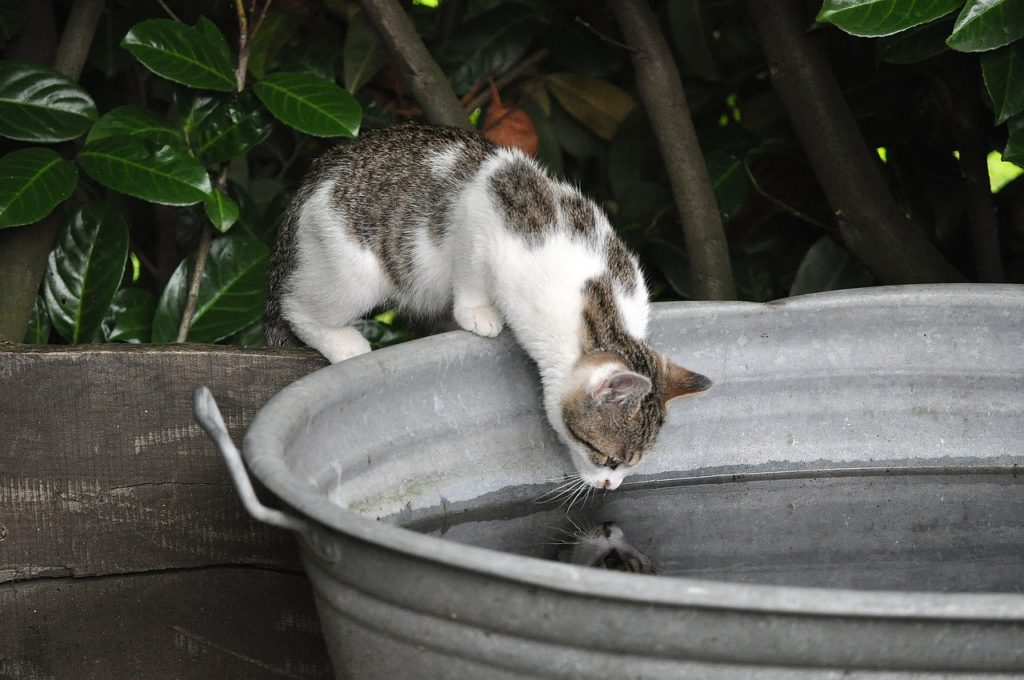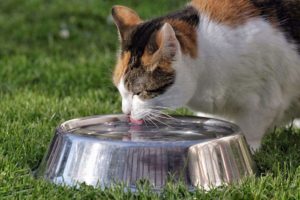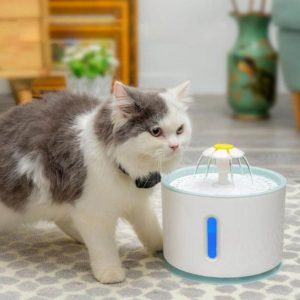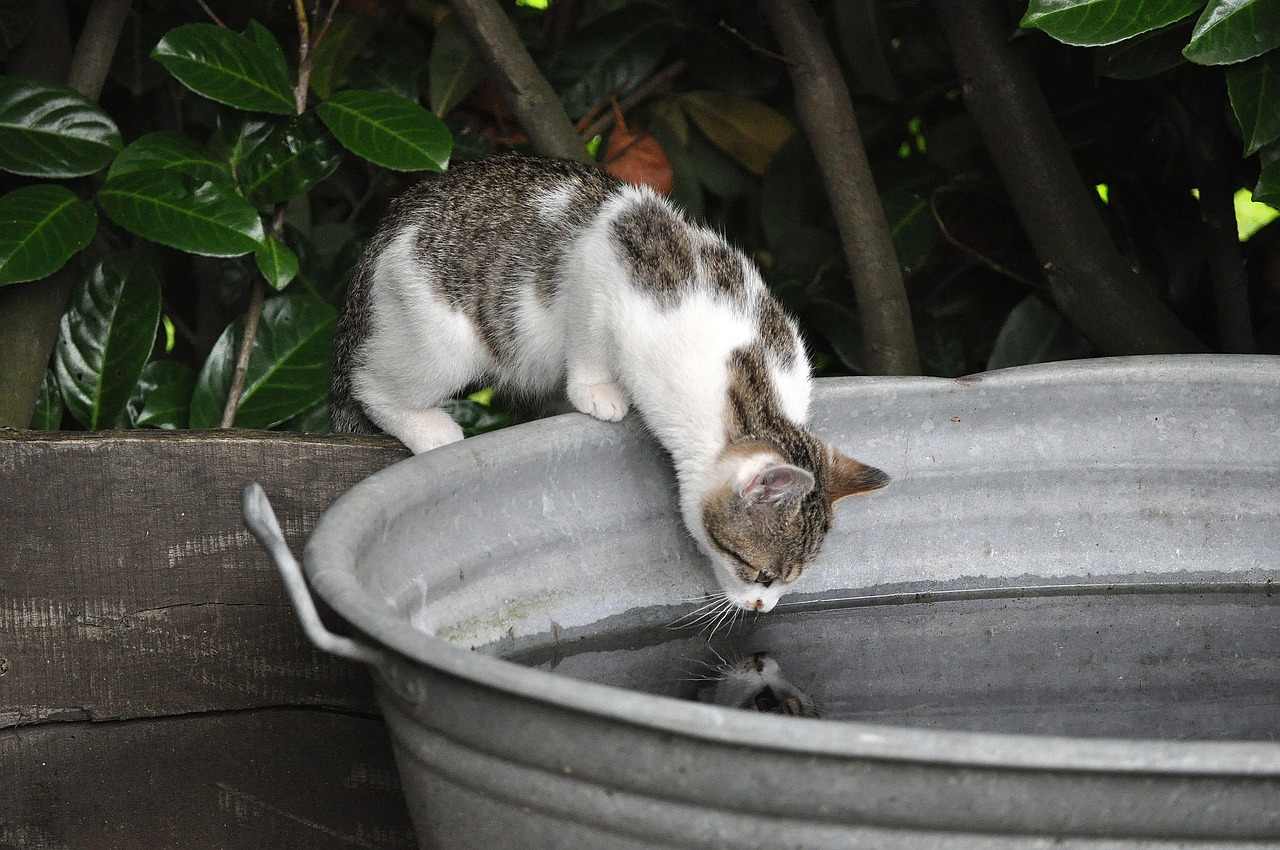
In this article, we will explore the various factors that may contribute to increased thirst in cats. It’s important to note that some causes are more serious than others, and only a veterinarian can accurately diagnose the underlying issue. Let’s delve into the possible reasons why your cat is drinking a significant amount of water and what actions you can take to ensure their well-being.
Reasons Why Your Cats is Drinking a Lot of Water
Recent Change to Dry Food
Cats who primarily consume wet food obtain most of their required moisture from their diet. If you have recently transitioned your cat from wet food to a diet consisting solely of dry food, you may notice an increase in their water intake. While this change in behavior does not necessarily result in increased urination, it’s crucial to monitor your cat’s drinking habits closely.
If your cat continues to drink more water over an extended period after the diet change, it is advisable to consult your veterinarian. They may recommend bloodwork and urine testing to rule out any underlying health issues.
Hot Weather

Just like humans, cats may naturally drink more water during hot weather to regulate their body temperature. It is considered normal for cats to increase their water intake in response to higher temperatures. However, it’s essential to distinguish this behavior from signs of heatstroke.
Keep a close eye on your cat for additional symptoms of heatstroke, such as panting, restlessness, pale or red gums, weakness, vomiting, or abnormal mentation. If your cat exhibits increased thirst but does not display any of the aforementioned heatstroke symptoms, it is less likely to be a cause for concern. However, if you are unsure or concerned, reach out to your veterinarian for professional advice.
Kidney Disease
Kidney disease is a prevalent and serious condition that affects cats. While it is not curable, early detection is crucial for implementing appropriate therapies to slow its progression. Regular blood work, typically conducted biannually or yearly depending on your cat’s age, is recommended to monitor kidney health.
Look out for signs of kidney disease, including decreased appetite, increased urination, muscle or weight loss, lethargy, vomiting, and, in severe cases, pale gums (anemia). If your cat is drinking a lot of water and urinating more frequently, it may be an indication of early-stage kidney disease. To evaluate kidney function, your veterinarian may recommend bloodwork, urine testing, and blood pressure monitoring.

Hyperthyroidism
Hyperthyroidism is a serious condition that commonly affects cats. It can even impact the heart’s health. One significant sign of hyperthyroidism is when an older cat suddenly exhibits behaviors more typical of a kitten.
Other symptoms associated with hyperthyroidism include increased appetite, rapid weight loss, unkempt hair coat, thickened nails, vomiting and/or diarrhea, increased thirst, hyperactivity, and excessive vocalization. Diagnosis is typically based on bloodwork, and various treatment options are available, including permanent solutions.
Diabetes Mellitus
Diabetes Mellitus is another severe condition that can lead to increased thirst and urination in cats. This disease affects the cat’s ability to regulate blood sugar levels and is commonly observed in overweight cats. Maintaining your cat’s ideal weight can help prevent the onset of diabetes.
Cats diagnosed with diabetes will require insulin injections and regular monitoring of urine and blood sugar levels. With appropriate management, some cats may even go into remission from the disease. However, it is crucial to seek veterinary attention to prevent serious complications associated with untreated or unmanaged diabetes.
When to Seek Veterinary Care

If you observe that your cat is consistently drinking a significant amount of water and the behavior does not resolve on its own after a few days, it is advisable to visit your veterinarian. Increased thirst can be a symptom of an underlying health condition, and proper diagnosis is essential for appropriate treatment.
Your veterinarian will likely recommend bloodwork and urine testing to determine the cause of the increased thirst. The treatment plan will vary depending on the specific underlying issue. Remember, the well-being of your cat should always be a priority, and seeking professional veterinary care is the best course of action.
Conclusion
Understanding your cat’s drinking habits and recognizing any changes in behavior is vital for their overall health and well-being. While increased thirst can be a cause for concern, it can also be attributed to various factors, ranging from dietary changes to underlying health conditions.
By closely monitoring your cat’s water intake and being aware of any accompanying symptoms, you can better assess whether their increased thirst requires veterinary attention. Remember, your veterinarian is the best resource to diagnose and treat any underlying health issues your cat may be experiencing.
Promoting a healthy lifestyle for your cat includes providing a balanced diet, maintaining an ideal weight, and ensuring regular veterinary check-ups. By doing so, you can help your feline companion live a happy and healthy life.
